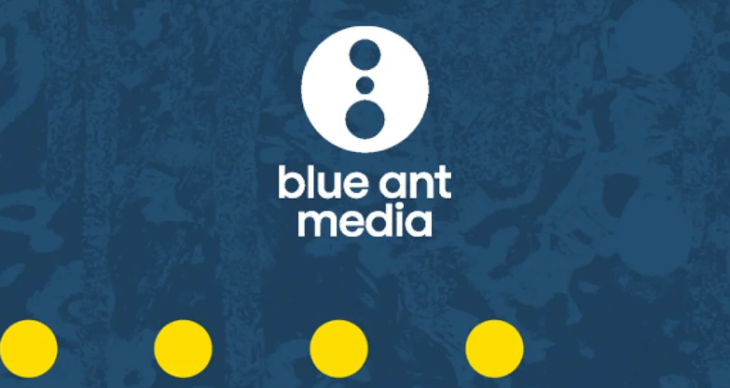
By Linda Stuart and Ahmad Hathout
Blue Ant Media executives said Tuesday in the company’s first quarterly earnings report since going public that the increasing addition of ad tiers into subscription-based video-on-demand (SVOD) services has stretched advertising dollars over the last 12 months.
“Revenues have been impacted,” CEO Michael MacMillan said during the conference call Tuesday. “The value of individual advertising inventory units, measured as the cost per thousand impressions or CPM, has also gone down with the increase in the number of channels and the excess ad inventory in the marketplace as the SVODs have added ad tiers.”
He said the market is “expected to remain soft in the near term, particularly given increasing tariff uncertainty.”
Streaming services like Netflix, Disney+, and Amazon Prime Video offer ad-tiers. According to an MTM report from last summer, 21 per cent of anglophone and 26 per cent of francophone Bell Crave viewers choose a cheaper subscription option that includes ads. Similarly, 17 per cent of both anglophone and francophone Netflix subscribers opt for the ad-supported tier, as do 13 per cent of anglophone and 10 per cent of francophone Disney+ subscribers.
According to May 2025 reporting from Deadline, streaming ad tiers make up nearly half of U.S. subscriptions for SVODs that offer them.
MacMillan said Tuesday that the company’s Free Ad-supported Streaming TV (FAST) channel brands have performed well on YouTube and other social platforms last year, as well as companion AVOD channels operated by smart TV platforms. However, “audience growth continues to outpace monetization on the linear FAST channels, resulting in low seller rates and CPMs, factors that industry forecasts suggest will begin to correct in coming years when advertisers demand for connected TV advertising inventory rebounds,” he said.
The financial results announced Monday for the three months that ended May 31 are for only the company’s Blue Ant Media (BAM) subsidiary and do not include results from the Jam Filled Entertainment, Proper Television and Insight Productions divisions acquired by Blue Ant in its reverse takeover of Boat Rocker Media, which closed on Aug. 1.
BAM’s revenues increased by seven per cent year-over-year in the quarter, attributed to strong growth in global advertising revenue that offset a decline in production revenues from delayed greenlights.
The revenue increase combined with a decline in cost of sales expense drove a 31-per-cent increase in adjusted EBITDA (earnings before interest, taxes, depreciation and amortization) for the same time period.
BAM’s global channels and streaming segment experienced a significant profit increase to $5.3 million in the third quarter from $3.3 million in the same period last year, driven by an increase in connected TV (CTV) ad sales and channel revenues.
The subsidiary’s Canadian Media segment profit was $8.6 million in Q3 compared to $9 million in the same quarter last year, “reflecting a modest decrease in revenues due to headwinds in the traditional broadcast advertising market, partially offset by growth in consumer show revenue attributable to continued post-Covid recovery in the sector,” a Blue Ant press release said.
BAM’s production and distribution segment profit for the third quarter increased to $2.1 million from $1.3 million in the third quarter of the prior year, “as a decline in production revenues due to several productions that were anticipated for this year that have not been greenlit, was more than offset by an increase in international distribution revenues as well as a decline in associated cost of revenues and a reduction in sales, general and administrative expenses,” Blue Ant said.
Net income in the third quarter was impacted by one-time items that included $4.2 million in transaction related costs, an $8.3 million goodwill impairment charge, and $8.5 million in share-based compensation related to accelerated recognition of certain restricted stock units which fully vested and settled on closing of the reverse takeover. As a result, BAM experienced a loss from continuing operations of $11.2 million in the third quarter compared to income of $2.7 million in the prior year period.
BAM’s operating cash flow in the first nine months of fiscal 2025 was $5 million compared to $5.6 million in the prior year period with the decline due in part to reverse takeover transaction-related costs. Including working capital changes, net cash provided by operating activities was $11.1 million for the first nine months of fiscal 2025 compared to $10.4 million for the same time period last year. Cash generated in the 2025 period was primarily used for debt repayment, capital expenditures and investments in library content.



